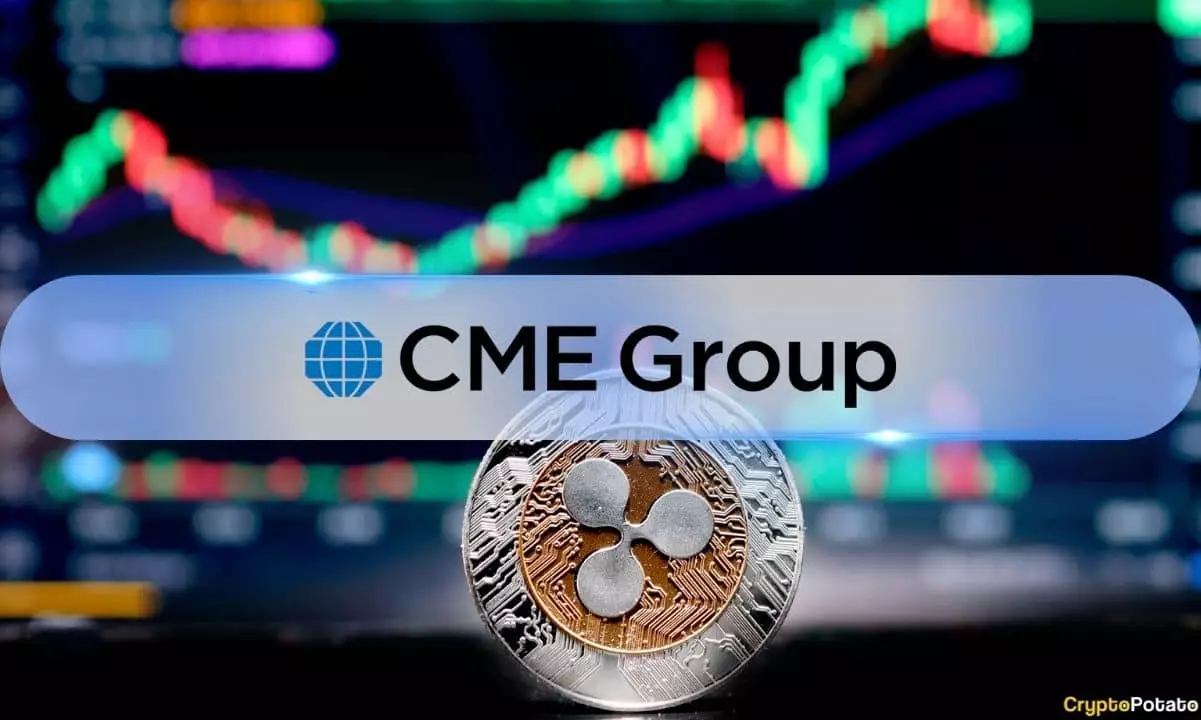The Chicago Mercantile Exchange (CME) recently made a splash in the crypto space with the announcement of XRP futures contracts set to launch on May 19. This strategic move, further diversifying CME’s offerings after their successful introduction of Bitcoin, Ethereum, and Solana futures, hints at a significant financial awakening within the realm of digital assets. In an environment where skepticism is abundant and regulation is a continuous battle, the inclusion of XRP futures underscores an emerging recognition of the cryptocurrency’s viability among institutional traders. However, one can’t help but ponder whether this cautious acceptance of Ripple’s native token serves to reinforce existing power structures within the financial ecosystem or propels the crypto market toward its long-awaited legitimization.
XRP: A Case Study in Contradictions
Ripple’s XRP has been a polarizing asset, often embraced by a community eager for mainstream recognition yet frequently scrutinized in regulatory discussions. The recent legal tussles between Ripple and the U.S. Securities and Exchange Commission (SEC) over the token’s classification have added an air of unpredictability. Judge Analisa Torres’ refusal to approve a $50 million settlement agreement between Ripple and the SEC, citing procedural irregularities, reflects a complex narrative where even minor victories can set off seismic waves in market sentiment. As XRP awaits clarity on its legal status, the launch of futures contracts poses a tantalizing question: will institutional interest in these derivatives bolster XRP’s price and reputation, or will it serve as a damper while the regulatory storm continues to churn?
Understanding the Futures Landscape and Pricing Dynamics
CME’s introduction of two distinct contract sizes—standard and micro—allows traders from various spectrums to engage with XRP without needing physical ownership. The standard futures contract, which represents 50,000 tokens and a minimum price fluctuation of just $0.0005, is a nod toward institutional players seeking substantial exposure. Meanwhile, the micro XRP futures contract caters to retail traders wanting to dip their toes into this promising market without overcommitting. This duality caters not just to diverse trading strategies but also provides a buffer against volatility—a crucial factor given XRP’s fluctuating price movements.
Yet, while the mechanics of futures trading unlock new possibilities for hedging and speculation, one must ask whether the fee structures for participants underpin a broader exclusionary tactic. Individual members pay significantly lower fees compared to their non-member counterparts, which can create an unequal playing field. If the goal of futures trading is to democratize access to financial instruments, one must wonder if the CME’s model inadvertently edges out smaller traders, who might already operate on thin margins.
The Irony of Institutional Adoption and Market Movement
Despite the buzz surrounding the futures launch, XRP’s price has remained notably stagnant in the lead-up. A slight dip of 1.3% in the twenty-four hours prior, coupled with an inconsequential 2.6% loss over the past week, casts a shadow on the optimistic outlook spurred by institutional adoption. It is ironic that, just when the market should be galvanizing around the introduction of institutional-grade products, the price action exhibits a lack of conviction.
Nevertheless, XRP boasts a robust 12.1% gain over the past month—a favorable indicator that suggests traders may be betting on the potential of the futures rollout. This ambivalence hints at broader market uncertainties and may signal skepticism about how much institutional adoption genuinely influences price stabilization and upward momentum.
The Bigger Picture: Navigating the Crypto Regulation Maze
As CME proceeds to list XRP futures contracts monthly for the next six months, traders and market analysts alike are left mulling the larger implications. The conditions set forth—such as price fluctuations, contract sizes, and trading hours—serve as a microcosm of the complexities surrounding cryptocurrency regulation and institutional participation. Without significant clarity from the SEC, the landscape remains fraught with potential pitfalls, and those daring enough to tread these waters must be guided by a mix of strategic foresight and a willingness to adapt.
In this ever-evolving scene of digital assets, the rise of XRP futures could very well be a double-edged sword. It’s an invitation to engage with new financial instruments while also being entangled in the snare of regulatory uncertainty. How this will all unfold is uncertain, but one thing is clear: the dynamics of cryptocurrency trading are changing, and those who can navigate the tides of these developments stand to potentially reap monumental rewards.

